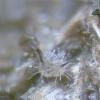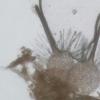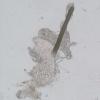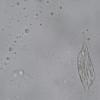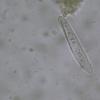
25-08-2025 17:37
 François Freléchoux
François Freléchoux
Bonjour,Nous avons trouvé samedi dernier à l'ét

20-08-2025 19:04
Ethan CrensonHello, This asco was found on the same wood as my

22-08-2025 08:41
Masanori KutsunaHello.Can anyone help me to get this article?Liu H

21-08-2025 02:18
Stefan JakobssonOn a necrotic section of a living Tilia cordata I
 Found on horse dung.
Found on horse dung.Not directly recognized as a Pyxidiophora species.
Only not able to determine what kind of Pyxidiophora this is, so I asked David Malloch who studied Pyxidiophora species for his opinion
Perithecia: rounded 149-178 um in diameter, with a dark brown neck 274-285x8.0-10.0 um wide, at the base 15.0-16.0 um wide and the top 10.5-11.5 um wide.
Peridium: membranaceous, semi-transparent, with large angular outer cells not covering the whole perithecium.
Hairs: hyaline, septated 75-79 um long 1.75-2.2 um wide, at the base 3.5-4.2 um wide with a rounded top.
Paraphyses: lacking
Ascus: unitunicate, number of spores unknown, 51.0x16.2 um.
Spore: 33.5x5.5 um.
The following is the response from David Malloch:
Your collection has smaller ascospores than most described species of Pyxidiophora. My first guess was Pyxidiophora microspora (Hawksworth & Webster) Lundqvist but that species was not described with stiff hairs on the perithecium. As Lundqvist said, Mycorhynchus brunneocapitatus Hawksworth and Webster may be the same thing but with slightly more mature ascospores. I have attached the Hawksworth and Webster paper where these two species were described.
Meredith Blackwell and I also discussed another species that has small spores. We were unable to identify it and found that the literature on most species, including P. microspora, was too incomplete to allow a positive identification. I have also attached that paper.
In New Brunswick we sometimes get another species with small spores that consistently grows on seaweed washed up on the beach. We have called that one P. lilliputiana but have not published the name. The perithecia lack stiff hairs like yours.
As we discovered in our work, Pyxidiophora species have very complex life cycles involving two hosts, a fungus and a mite, and often several spore types. The available literature on this genus is not detailed enough to compare collections. As we say in English, we have "thrown in the towel" and have abandoned all efforts to name species of Pyxidiophora.
Regards,
David



